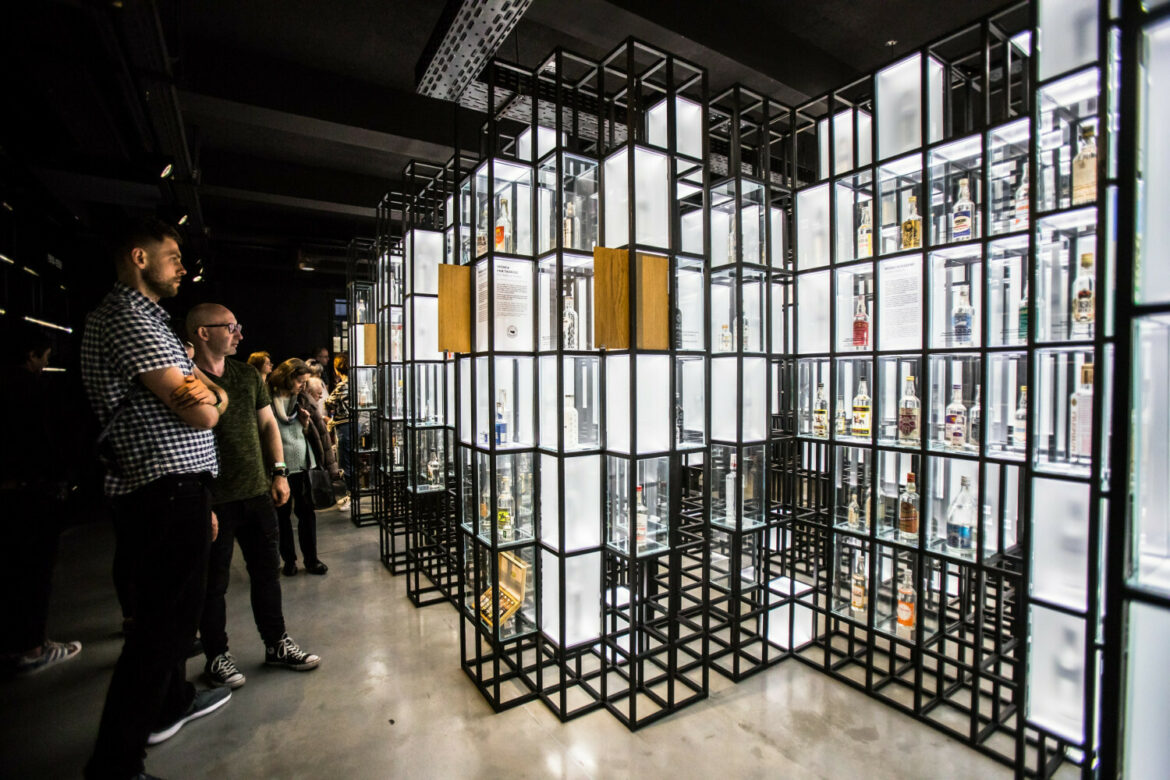The Museum of Polish Vodka is inviting participants to a temporary exhibition “Kropla Koloru – Barwy Wódki” (Drop of Colour – Colours of Vodka). The exhibition presents a world of colour and form, connected with the colourful history of Polish spirits. During the visit, the visitor has the opportunity to see the facility’s hitherto unexposed collections.
The form in which Polish vodka is contained has changed many times over the years, taking on different capacities and decorations. The exhibition features pre-war half-white glass products, characterised by a light colouring of varying intensity. These transparent bottles appeared on the Polish market during the communist era.
“It would seem that a bottle is a simple and trivial object, but the bottles of Polish vodkas can be treated as an exhibit – they provide us with a lot of information about former technical capabilities, factories, consumer preferences and glass manufacturers who often displayed great artistic skills”, says Agnieszka Honkowicz, curator of the exhibition.
The exhibition “Kropla Kolororu – Wódki Barwy” is housed in a former boiler room, which once served the rectification columns operating in the building. Five original boilers have survived to this day. On their lids can be found additional information about their origin. Thanks to nameplates with manufacturers’ details, we know that the youngest item was manufactured in 1959 at the Sosnowiec Boiler Building Works, while the oldest was built in 1937 at the W. Fitzner company from Siemianowice Śląskie.
The Museum of Polish Vodka is the only such place in the world. It is located in the historic building of the Rectification Plant on the premises of the Koneser Praga Centre in Warsaw. At the turn of the 19th and 20th centuries, on an area of 50,000 square metres, between Ząbkowska, Nieporęcka, Białostocka and Markowska Streets, a complex of neo-Gothic buildings was erected, forming the Warsaw Vodka Factory “Koneser”. It was here that such flagship brands of Polish vodkas as Luksusowa and Wyborowa were bottled”, says the Museum.
Arkadiusz Słomczyński





